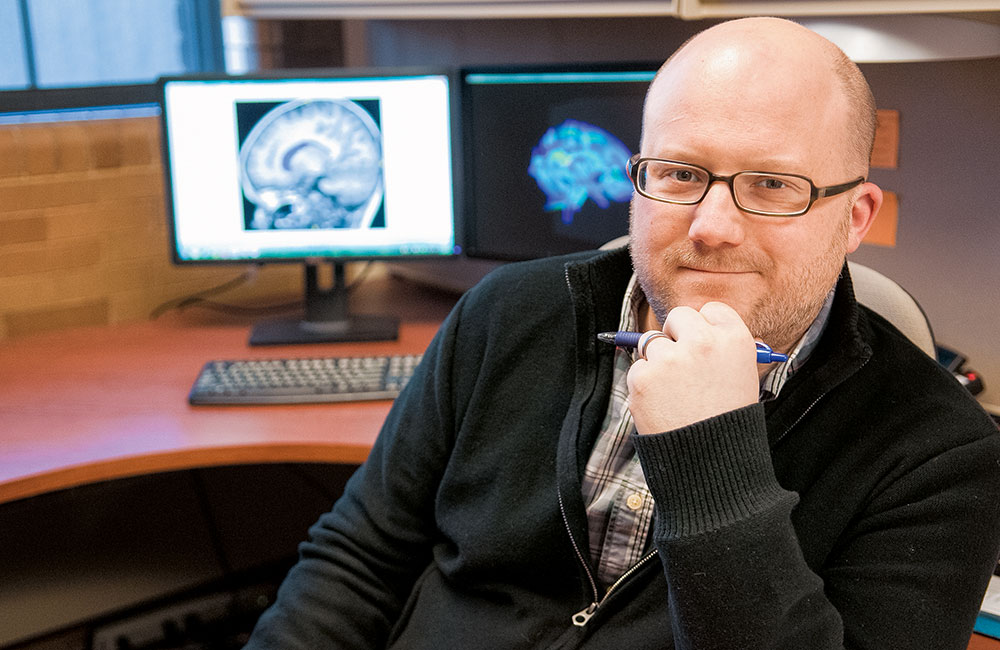Jason Wolff, ’10, once worked with a teen with autism who was sometimes incredibly late for school because a fingernail wasn’t clipped properly.
“His need for symmetry, his repetitive behaviors—we had no resources to handle that,” Wolff remembers. “His psychiatrists were helpless—they looked to me! I had to come up with my own ideas, and that pushed me to research.”
Seeking behavioral interventions led Wolff to search for the origins of behaviors often seen in autism. Today, Wolff is a new assistant professor in the Department of Educational Psychology.
“When I reflect on my path, it began in my early 20s,” he says. “The questions and challenges that I came up with then—I’m still on that path, but it’s taken a lot of curves, through fields as diverse as neuroscience and special education.”
Wolff grew up in Rapid City, South Dakota, where he was a member of the debate team and developed a strong interest in constitutional rights and protecting the rights of the minority. Then he went to college at the University of Chicago.
“I wanted a different experience, and it was great,” he says. “It was an incredible intellectual environment.”
A job with legal aid did not hold his interest. By luck, Wolff says, he got to work in a group home for adults with severe disabilities and wrote his undergraduate thesis based on that experience.
After college, Wolff moved to the Twin Cities for a job, working with people with intellectual disabilities and autism. He learned about the contrasts among service providers. More importantly, he observed the disconnect between research and practice and realized how little was known about autism.
Bringing biology into the study of behavior
His path led to graduate school. It was educational psychology professor Frank Symons who first allowed Wolff to see that it would be possible to bring biology into the study of behavior. Symons specializes in the study of self-injurious behavior, something that about half of all children with autism experience.
“The question is, when and how do these behaviors start?” says Wolff. “There’s an origin to them.”
Advances in brain research and technology opened doors. After finishing his doctorate, Wolff took a postdoctoral appointment at the University of North Carolina. There he focused on the brain, bringing together neuroscience and behavioral research, studying babies to look for biological signs of behaviors that will emerge later.
“The standard approach is to wait until there’s a failure, like missing a developmental milestone,” he explains. “We can help in these situations, but if we can identify the signs even earlier, we could develop early or even preventative interventions that could significantly improve outcomes.”
He was drawn back to the University of Minnesota, joining faculty members working on related issues in educational psychology. He is also connecting with faculty members in child development and other departments across the U who are asking questions related to autism.
The University of Minnesota is one of the best places in the world to work with brain imaging, including MRI, EEG, and eye-tracking devices. Wolff’s lab, funded in part by the National Institute of Mental Health, is leveraging brain imaging data to characterize factors associated with the early emergence of behavioral excesses and deficits in autism spectrum disorder. It’s also analyzing how brain and behavior data might help tailor special education for young children.
“What can the brain tell us about educational practice?” he asks. “It might sound like a stretch now, but studying the brain could tell us something about teaching a class of second-graders.”
Read more about Jason Wolff on his faculty page.
Story by Gayla Marty | Photo by Dawn Villella | March 2015
 Jason Wolff
Jason Wolff